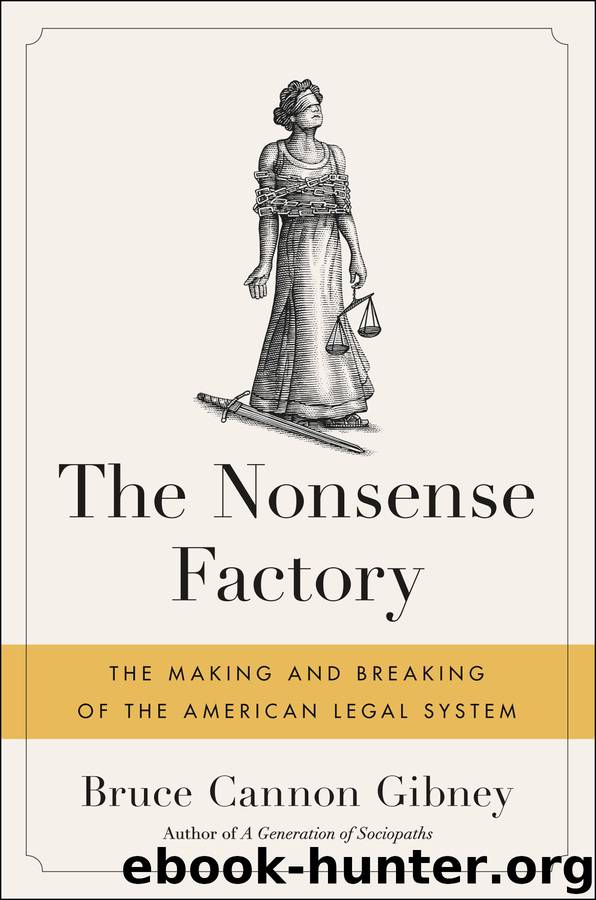The Nonsense Factory by Bruce Cannon Gibney

Author:Bruce Cannon Gibney
Language: eng
Format: epub
Publisher: Hachette Books
Published: 2019-05-14T04:00:00+00:00
Pandemic or Pandemonium?
Judging by public opinion, America has experienced an unrelenting increase in crime since 1989, when Gallup began polling the issue.99 Curiously, August 2000 to October 2001 was a rare stretch when most Americans believed crime was not on the rise, though that period coincided with one of the few truly significant and well-publicized crime spikes in recent decades: the 2001 accounting scandals (relating to the dot-com crash, and the collapses of Enron and several other firms, some of the most costly financial crimes in history) and the 9/11 terrorist attacks, which murdered 2,977 people and will contribute to the early deaths of thousands of others (against an annual national homicide rate of roughly 15,000).100 Leaving that aside, since 1993, on average, almost 65 percent of Americans in any given year believed that crime had risen over the past year; more recently, 57 percent believe crime has gotten worse compared to a baseline set in 2008.101 Both Democratic and Republican politicians cater to this, spending heavily on police and pushing harsh sentencing laws and trimming civil liberties, policies pushed by, among others, Clinton, Bush II, and Trump. Courts, as we’ve seen, have also become more deferential to, and protective of, police.
But crime has not been rising, it’s been falling, and by a lot. From a peak of 5,856 crimes per 100,000 people in 1991, crime fell 51.6 percent to 2,837 per 100,000 by 2016.102 What’s important is that crime began falling before many of the new cops, tougher sentences, or enhanced police discretion were deployed, and while crime continued to drop thereafter, much of the fall occurred before any crime initiatives could take hold. But policing expanded anyway. Since 1992, the nation added almost 200,000 new cops and the police/population ratio grew by over 7 percent, but if anything, crime declines decelerated as policing ratios peaked in 2008.103 Since 2014, crime has been roughly flat, hovering near twenty-five-year lows. When Trump lamented American “carnage” in his campaign, crime rates were basically steady, with lower property crime rates offset by a modest increase in violent crime, and most of that increase was driven by just a few cities such as Los Angeles, Charlotte, San Antonio, and Chicago.104 Chicago, whose civic structures have long been undermined by corruption and financial problems, by itself accounted for half the growth in the murder rate. A few cities are experiencing crime waves, but the nation is not.
The relationship between police and crime suppression is more complicated than just the number of officers. It may be that police have grown more effective, using methods like zero-tolerance policing and statistically driven management. But again, these policies were enacted after crime started dropping—sometimes long after. New York’s crime rate started falling around 1991 or 1992, in line with national trends; at most, pilot experiments in cleaning up the subways had been underway for about a year and Rudy Giuliani, who championed the program, did not take office until 1994. Crime in New York was already waning, as
Download
This site does not store any files on its server. We only index and link to content provided by other sites. Please contact the content providers to delete copyright contents if any and email us, we'll remove relevant links or contents immediately.
Hit Refresh by Satya Nadella(9001)
When Breath Becomes Air by Paul Kalanithi(8272)
The Girl Without a Voice by Casey Watson(7781)
A Court of Wings and Ruin by Sarah J. Maas(7569)
Do No Harm Stories of Life, Death and Brain Surgery by Henry Marsh(6845)
Shoe Dog by Phil Knight(5085)
Hunger by Roxane Gay(4837)
A Higher Loyalty: Truth, Lies, and Leadership by James Comey(4803)
The Rules Do Not Apply by Ariel Levy(4797)
Everything Happens for a Reason by Kate Bowler(4617)
Tuesdays with Morrie by Mitch Albom(4610)
The Immortal Life of Henrietta Lacks by Rebecca Skloot(4456)
Millionaire: The Philanderer, Gambler, and Duelist Who Invented Modern Finance by Janet Gleeson(4309)
How to Change Your Mind by Michael Pollan(4261)
All Creatures Great and Small by James Herriot(4197)
The Money Culture by Michael Lewis(4033)
Man and His Symbols by Carl Gustav Jung(4017)
Elon Musk by Ashlee Vance(3994)
Tokyo Vice: An American Reporter on the Police Beat in Japan by Jake Adelstein(3909)
